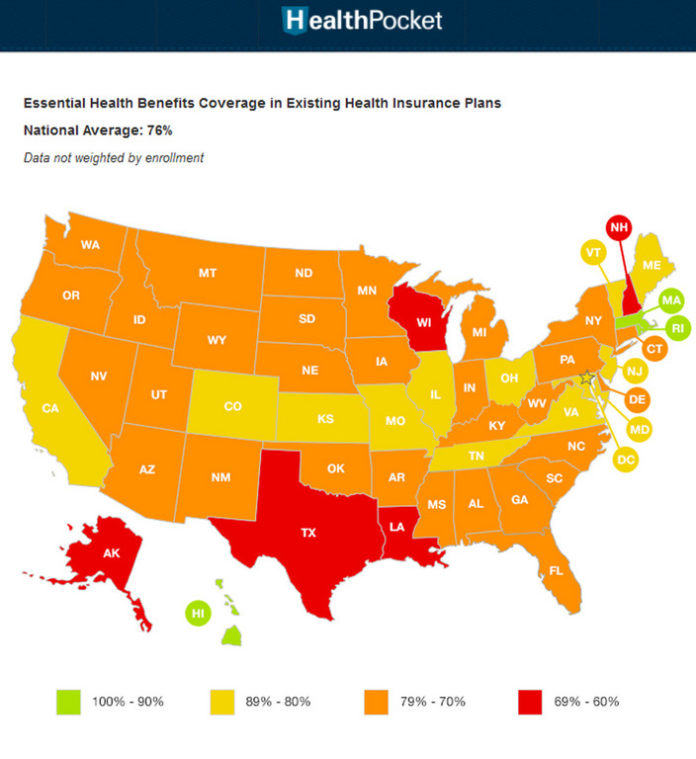
SUNNYVALE, Calif. – Although fewer than 2 percent of available health plans satisfy all required health benefits under the federal Affordable Care Act, Massachusetts and Rhode Island plans covered the highest percentage of essential benefits in the country, according to an analysis from HealthPocket Inc.
Essential health benefits are the set of health care service categories that health plans must offer starting in 2014, as mandated by the Affordable Care Act.
According to the HealthPocket analysis, most plans cover only 75 percent of essential services, leaving what the health information website called a “significant gap” between what’s currently covered and what will be required in January 2014.
Massachusetts and Rhode Island health plans currently offer the most comprehensive coverage of the Affordable Care Act essential benefits. Massachusetts had the highest percentage of covered essential benefits at 94 percent, followed by Rhode Island at 93 percent.
In February, the U.S. Department of Health and Human Services released the final rule on essential health benefits. The HealthPocket analysis said that a number of the essential benefit categories such as ambulatory care, emergency care and hospitalization services are currently covered by nearly all health plans, there are “gaping holes” in other categories.
Maternity leave and newborn care are covered by only 34 percent of plans; pediatric dental and vision care were covered by only 24 percent of plans. Mental health services and substance use disorder services were covered by 61 percent and 54 percent of plans, respectively.
“It’s important for consumers to understand that these coverage gaps currently exist in the plans available today. Just like pre-existing condition exclusions allow health plans to avoid paying for certain risks, the coverage gaps we see in this report are another way that plans can currently elect to not cover certain health care costs,” Kev Coleman, head of research and data at HealthPocket, said in prepared remarks.
“Coverage will become more complete starting in 2014, and the vast majority of plans in the market today will no longer be sold after the end of this year in their present form,” Coleman added.
In addition to Rhode Island and Massachusetts, Hawaii, California and Maryland also had high percentages of coverage, at 90 percent, 89 percent and 89 percent, respectively.
Alaska health plans currently had the lowest percentage of covered essential health benefits at 66 percent, followed by Wisconsin at 67 percent, Texas and New Hampshire at 68 percent and Louisiana at 69 percent.
To view the full HealthPocket analysis visit: www.healthpocket.com.











